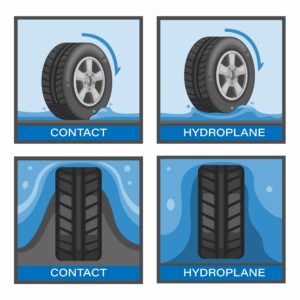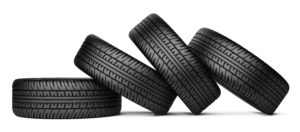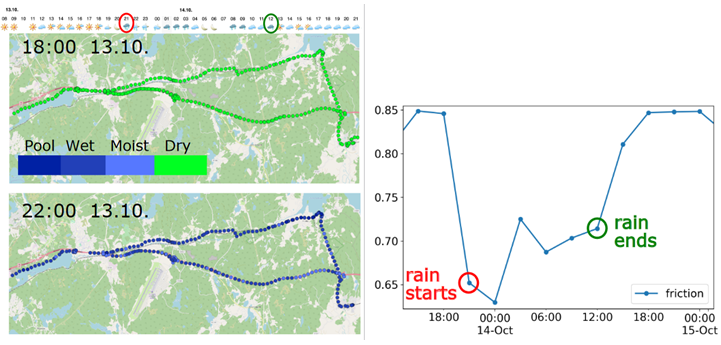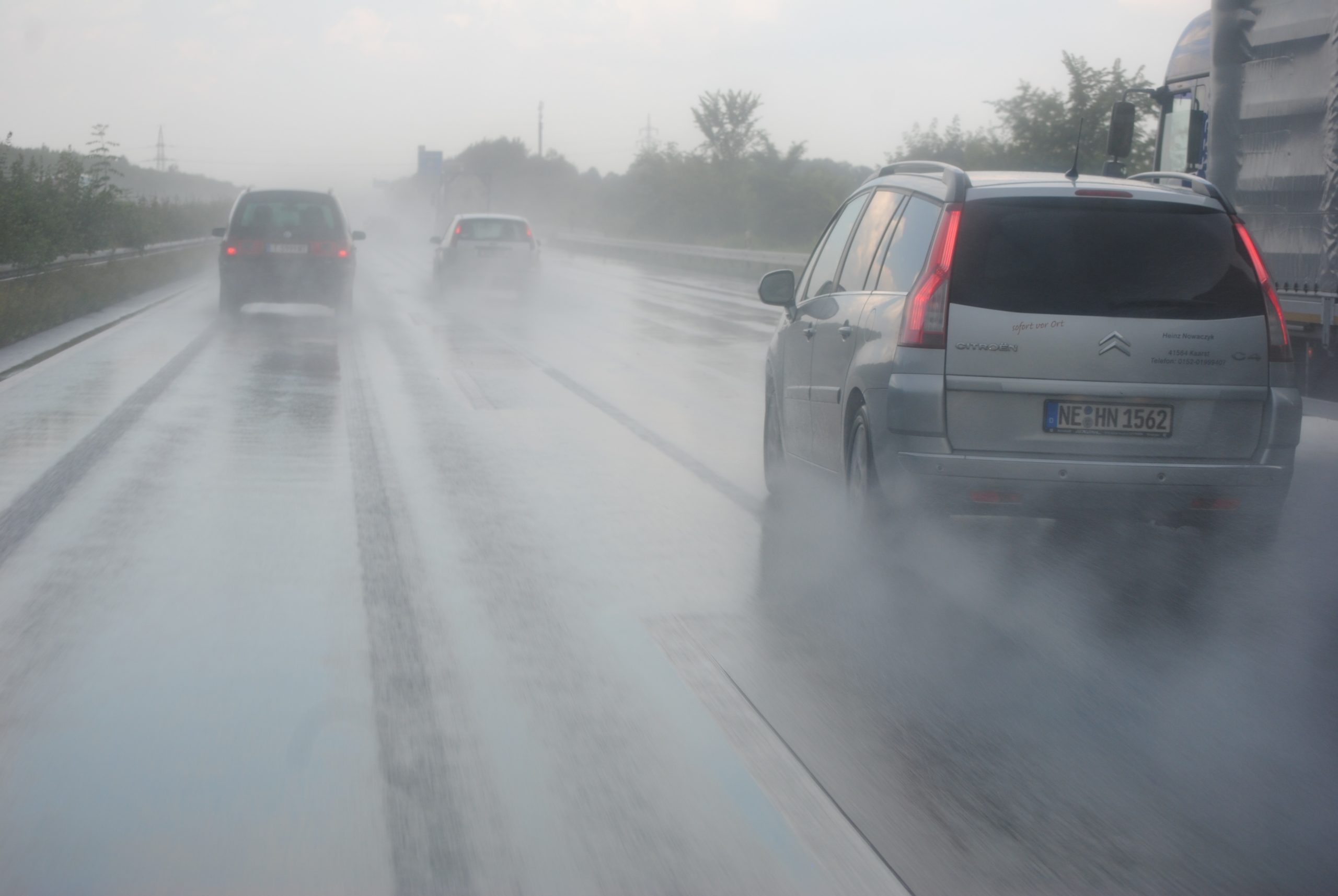Bad WEather a Leading Cause in Road AcCidents
Bad weather is one of the leading causes of accidents on roads. According to the Federal Highway Administration approximately 21% or 1,235,000 accidents each year are caused by adverse weather conditions in the U.S.A. These conditions include rain, sleet, snow, fog, severe crosswinds, or blowing snow/sand/debris. Weather related accidents lead to nearly 5,000 fatalities and 418,000 injuries each year. The majority of weather-related accidents happen on wet pavement (70%) or during rainfall (46%). Drivers generally understand that they should reduce speed in bad weather but often fail to do so adequately. Adapting to changes in weather is crucial in order to reduce accidents for both human drivers and self-driving cars.

What is Aquaplaning?
Car wheels are mandated to have treads on them. The function of the treads is to expel water in front of the tire so that the car maintains contact with the road, this provides grip and traction when driving on wet roads. Aquaplaning is the phenomenon of a car’s tires losing contact with the road surface, leading to a loss of control for the driver. When control is lost the driver will be unable to brake, accelerate or steer.

When does Aquaplaning occur?
Aquaplaning is most likely to occur after heavy rainfall when the surface of the road has accumulated large amounts of water. Poorly maintained roads increase the likelihood for aquaplaning as potholes and ruts allow for large puddles of standing water to gather.
Three key factors affect the likelihood of aquaplaning to occur:
Water depth. Tires lose traction sooner in deeper water.

Tire quality. Tread depth, tread pattern design and the rubber compound of the treads all influence aquaplaning risk. For commercial cars tread depth is the most important factor for drivers to keep an eye on. As tires wear out and the tread becomes shallower, the likelihood of aquaplaning increases as shallow treads can displace less water. Additionally, shallow tire treads and or low inflation pressure significantly increase the required braking time when on a wet surface. As it is difficult for people to estimate the level of increased braking distance needed, the likelihood of accidents increases with worn and poorly inflated tires.

Speed. Driving faster on wet roads decreases the traction between the car and the road. With enough speed the treads in the tires fail to displace enough water and contact with the road is lost leading to aquaplaning.
How RoadCloud prevents aquaplaning
RoadCloud was founded in 2014 to provide information services to make roads safe to drive on in all weather conditions. Since then, we have developed a unique technology that collects multiple real-time data streams persistently from commercial vehicle fleets and then sends them to our data cloud. Our algorithms create comprehensive real-time, and hyperlocal road condition and road weather data.
Our optical sensors which are mounted on commercial vehicles such as buses, taxis and delivery vehicles, can measure water depth on roads, and therefor detect pooling. Pooling of water is especially dangerous on highways due to high driving speeds. With real-time continuous measurements, not only is it possible to react quickly and send warnings to all road users, but analysis over time can identify repeatedly pooling road sections that require maintenance.


RoadCloud data increases efficiency and reduces cost for the road maintenance industry all year round. Our optical sensors can distinguish between (black) ice, slush, snow and pooled water in all lighting conditions, which means that winter services vehicles can be routed dynamically to address hazardous driving conditions – increasing safety and reducing the amount of salt needed to cover the road network. Our fleets also measure road surface quality, which gives road maintenance decision makers and companies an excellent tool to prioritize road sections and measure the effectiveness of their activities.


